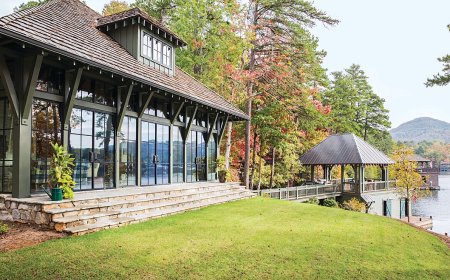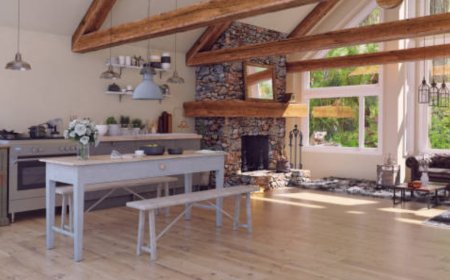How to Explore Les Invalides Esplanade
How to Explore Les Invalides Esplanade Les Invalides Esplanade is one of Paris’s most historically significant and visually commanding public spaces. Located in the 7th arrondissement, this grand open area stretches before the iconic Hôtel des Invalides—a complex originally built by Louis XIV in 1670 to house wounded and retired soldiers. Today, the esplanade serves as a monumental threshold betwe
How to Explore Les Invalides Esplanade
Les Invalides Esplanade is one of Paris’s most historically significant and visually commanding public spaces. Located in the 7th arrondissement, this grand open area stretches before the iconic Hôtel des Invalides—a complex originally built by Louis XIV in 1670 to house wounded and retired soldiers. Today, the esplanade serves as a monumental threshold between the military heritage of France and the modern cultural landscape of the capital. Whether you're a history enthusiast, an architecture lover, or a traveler seeking quiet grandeur away from the crowds of the Eiffel Tower, exploring Les Invalides Esplanade offers a deeply rewarding experience.
The esplanade is not merely a walkway; it is a carefully designed ceremonial space that frames the golden dome of the Dôme des Invalides, one of Paris’s most recognizable silhouettes. Its vast, symmetrical layout invites contemplation, while its surrounding monuments, gardens, and museums provide layered narratives of French military triumphs, royal ambition, and national identity. Understanding how to explore this space—its layout, symbolism, and hidden details—transforms a simple visit into an immersive journey through centuries of French history.
This guide provides a comprehensive, step-by-step approach to exploring Les Invalides Esplanade with depth and intention. From planning your visit to interpreting architectural symbolism, from timing your arrival to navigating nearby attractions, this tutorial equips you with the knowledge to experience the esplanade not as a tourist stop, but as a living monument.
Step-by-Step Guide
1. Plan Your Visit with Purpose
Before stepping onto the esplanade, determine your intent. Are you here to photograph the dome? To understand French military history? To enjoy a peaceful stroll amid grand architecture? Your purpose will shape your route, timing, and focus.
Begin by researching the opening hours of the Hôtel des Invalides complex. The esplanade itself is publicly accessible at all times, but access to the Musée de l’Armée, the Dôme des Invalides, and the Musée des Plans-Reliefs requires timed entry. Plan your visit to coincide with the museum opening times—typically 10:00 AM to 6:00 PM, with extended hours in summer. Arriving early (before 10:30 AM) ensures fewer crowds and softer morning light for photography.
Check the weather forecast. The esplanade is an open, unshaded space. On sunny days, bring a hat and water; on overcast days, the gray skies enhance the dramatic contrast of the gold dome against the stone façades. Avoid visiting during heavy rain—while the reflective wet stones create beautiful images, the area becomes slippery and less comfortable to navigate.
2. Arrive via the Optimal Approach
The most impactful way to experience the esplanade is to approach it from the west, along the Avenue de La Motte-Picquet. This route gradually reveals the Dôme des Invalides in the distance, building anticipation as the dome emerges above the tree line. Walking this path allows you to witness the full scale of the complex and appreciate the intentional axial alignment between the street, the esplanade, and the dome.
Alternatively, if you're coming from the Eiffel Tower, follow the Quai Branly promenade eastward toward the Seine. Cross the Pont de la Bourdonnais or Pont Alexandre III, then head north through the Jardin des Tuileries or along Rue de la Convention. Both routes offer scenic transitions into the formal geometry of Les Invalides.
For those using public transit, the nearest metro stations are La Motte-Picquet–Grenelle (Lines 6, 8, and 10) and École Militaire (Line 8). From either station, walk approximately 10–15 minutes toward the complex. Signs are clearly marked, and the golden dome is visible from several blocks away.
3. Enter the Esplanade with Awareness
As you step onto the esplanade, pause and take in the spatial composition. The space is rectangular, approximately 300 meters long and 150 meters wide, framed by low stone walls and flanked by symmetrical colonnades. At its center lies a long, straight path leading directly to the base of the Dôme des Invalides. This is not accidental—it is a deliberate design intended to guide the visitor’s gaze toward the dome as a visual and symbolic climax.
Notice the materiality: the esplanade is paved with pale limestone, a material chosen for its durability and luminous quality under sunlight. The surrounding buildings are constructed from the same stone, creating visual harmony. The colonnades, with their rhythmic arches and pilasters, echo classical Roman and Renaissance military architecture, reinforcing the theme of enduring strength.
Observe the placement of the cannons and artillery pieces lining the edges. These are not decorative—they are historical artifacts, many dating from the Napoleonic era. Each piece tells a story of conquest, defense, or technological advancement. Take time to read the plaques, even if only briefly. They often reveal the origin, date, and battle association of each cannon.
4. Study the Dôme des Invalides
The Dôme des Invalides is the architectural and spiritual centerpiece of the esplanade. Designed by Jules Hardouin-Mansart and completed in 1708, it was originally intended as a chapel for the veterans of the Invalides. Today, it houses the tomb of Napoleon Bonaparte, making it a site of national pilgrimage.
Approach the dome from the center of the esplanade. Stand at the midpoint and look upward. Notice how the dome rises in three distinct stages: the outer shell, the inner lantern, and the gilded copper cupola. The cupola, covered in gold leaf, reflects sunlight in a way that makes it glow even on cloudy days. This was intentional—the architects wanted the dome to be visible from across the city, a beacon of royal and imperial power.
Observe the windows and oculus. The light filtering through them creates shifting patterns on the interior floor. If you plan to enter the dome later, note the position of the sun during your visit. The best lighting inside occurs between 11:00 AM and 1:00 PM, when sunlight streams directly through the oculus.
5. Walk the Perimeter and Examine the Surrounding Structures
After absorbing the central axis, walk the perimeter of the esplanade. On the northern side, you’ll find the Musée de l’Armée—the largest military museum in Europe. Its façade is austere, with rows of arched windows and a monumental entrance flanked by statues of French military leaders. The museum’s collection spans from antiquity to the 20th century, including armor, firearms, uniforms, and battle plans.
On the southern side, the Esplanade opens toward the Seine and the Musée des Plans-Reliefs, a lesser-known but extraordinary museum housing 117 scale models of fortified cities built between 1668 and 1870. These models, made of wood and plaster, were used by French kings and generals to plan sieges and defense strategies. Access is through the Hôtel des Invalides complex, but the exterior façade is visible from the esplanade and worth noting for its restrained elegance.
At the eastern end of the esplanade, you’ll find the Cour d’Honneur—the main courtyard of the Hôtel des Invalides. This area is often used for military parades and ceremonial events. If you visit on a weekend, you may witness the changing of the guard or a commemorative ceremony. Even if no event is scheduled, the courtyard’s symmetry and the presence of the bronze statue of Louis XIV on horseback make it a compelling focal point.
6. Engage with the Sculptural and Symbolic Elements
The esplanade is rich with symbolic sculpture. Look for the four large statues at the corners of the esplanade’s main axis: representations of Victory, Prudence, Fortitude, and Justice. These are allegorical figures from classical iconography, chosen to embody the virtues of a righteous military leader.
Pay attention to the bas-reliefs on the colonnade walls. Many depict scenes from the Napoleonic Wars, the Franco-Prussian War, and colonial campaigns. These carvings were commissioned in the 19th century to glorify France’s military past. While some narratives have been reinterpreted over time, they remain powerful visual documents of how the state wished to be remembered.
Also notice the inscriptions on the base of the dome. The Latin phrase “A la mémoire de Napoléon Ier” is engraved in large letters. Below it, the names of major battles—Austerlitz, Jena, Wagram—are listed. These are not random—they represent the peak of French imperial power and are deliberately placed to be read by those approaching from the esplanade.
7. Visit the Interior Spaces (Optional but Recommended)
While the esplanade is a public outdoor space, the buildings surrounding it are museums and monuments open to the public. Entry to the Musée de l’Armée requires a ticket, but it is well worth the cost. The museum’s collection includes the personal armor of Louis XIV, the sword of Joan of Arc, and the original carriage used to transport Napoleon’s body from Saint Helena to Paris in 1840.
The Dôme des Invalides interior is equally impressive. Descend the steps into the crypt, where Napoleon’s tomb lies beneath a massive red quartzite sarcophagus. The crypt is surrounded by twelve statues representing French military heroes, and the ceiling is adorned with mosaics depicting scenes from Napoleon’s life. The acoustics are remarkable—whispers echo clearly, creating an almost sacred atmosphere.
The Musée des Plans-Reliefs is accessed through a separate entrance near the southern wing. The models are displayed in a long, vaulted room. Each one is a masterpiece of cartographic precision, some taking decades to complete. The scale ranges from 1:600 to 1:1000, and many include miniature buildings, fortifications, and even roads and rivers. The museum is quiet, rarely crowded, and offers a deeply immersive experience into pre-modern military engineering.
8. Capture the Moment Thoughtfully
Photography is permitted throughout the esplanade. For the best shots, position yourself at the western end of the esplanade, looking east toward the dome. Use a wide-angle lens to capture the full length of the space, with the dome centered. The golden hour—just after sunrise or before sunset—produces the most dramatic lighting, casting long shadows and warming the stone surfaces.
For portraits or candid shots, use the colonnades as a natural frame. The rhythmic arches create pleasing leading lines that draw the eye toward your subject. Avoid using flash indoors or near the tomb of Napoleon—it is both disrespectful and prohibited.
Consider using a tripod for long exposures at dusk. The esplanade is well-lit by streetlamps, and the dome’s illumination after dark creates a luminous silhouette against the night sky. The combination of the stillness of the space and the soft glow of the lights makes for hauntingly beautiful images.
9. Extend Your Experience Beyond the Esplanade
Les Invalides is not an isolated attraction. It sits within a cluster of cultural landmarks. After exploring the esplanade, consider walking south along the Seine to the Musée d’Orsay, housed in a former railway station and home to the world’s finest collection of Impressionist art. Alternatively, head north to the Eiffel Tower, which is visible from the esplanade’s eastern edge.
For a quieter experience, visit the nearby Jardin des Plantes du Val-de-Grâce, a serene 17th-century garden that was once part of a convent. It’s a hidden gem, rarely visited by tourists, and offers a peaceful contrast to the grandeur of Les Invalides.
Many visitors also combine their visit with a river cruise along the Seine. Several operators offer stops near the Pont Alexandre III, just a short walk from the esplanade. Cruising past the dome from the water provides a unique perspective—seeing the complex as a whole, rising from the riverbank like a palace of power.
10. Reflect and Document
Before leaving, find a bench along the northern colonnade and sit for ten minutes. Observe how the light changes, how visitors move through the space, how the sounds of the city fade into the quiet of the monument. This is the essence of exploring Les Invalides Esplanade—not just seeing, but sensing.
Consider keeping a small journal. Note what surprised you, what detail you hadn’t noticed before, how the space made you feel. Was it awe? Reverence? A sense of isolation amid grandeur? These reflections deepen your connection to the place and create a personal record that transcends a typical tourist checklist.
Best Practices
Respect the Sacred and Historical Context
Les Invalides Esplanade is not just a public park—it is a national memorial. The tomb of Napoleon is a site of deep cultural significance. Avoid loud conversations, eating, or sitting directly on the steps leading to the dome. Even if you’re not entering the crypt, behave with the solemnity the space demands.
Adopt a Slow, Observational Pace
Unlike the bustling streets of Montmartre or the packed pathways of the Louvre, Les Invalides rewards patience. Rushing through the esplanade in 15 minutes defeats its purpose. Allow at least 90 minutes to fully absorb the space. Walk slowly. Look up. Look down. Look sideways. Notice textures, shadows, and the interplay between architecture and nature.
Visit During Off-Peak Hours
Weekdays, particularly Tuesday through Thursday, are the quietest. Avoid weekends and French public holidays, when school groups and organized tours flood the area. Early mornings (before 10:00 AM) and late afternoons (after 4:00 PM) offer the best combination of light and solitude.
Wear Comfortable, Respectful Footwear
The esplanade is paved with uneven limestone slabs. While flat, they can be slippery when wet. Wear sturdy, non-slip shoes. Avoid high heels or flip-flops. Dress modestly—while there is no formal dress code, the site’s ceremonial nature calls for respectful attire. Avoid clothing with offensive slogans or imagery.
Bring a Guidebook or Use a Reputable Audio App
While the plaques provide basic information, deeper context requires more detail. Download an audio guide from the official Hôtel des Invalides website or use a trusted app like Rick Steves or Context Travel. These provide expert commentary on the symbolism, history, and architecture you might otherwise miss.
Photograph with Intention
Don’t just snap pictures. Ask yourself: What am I trying to capture? The symmetry? The light? The contrast between past and present? Frame your shots with purpose. Use the rule of thirds. Let the dome occupy one-third of the frame, and let the foreground—perhaps a lone visitor, a bench, or a cannon—anchor the composition.
Engage with the Local Culture
Parisians often visit Les Invalides for quiet reflection, not just tourism. You may see elderly locals sitting on benches reading, or students sketching the architecture. A simple smile or nod can create a moment of shared appreciation. Avoid treating the space as a backdrop for selfies—this diminishes its dignity.
Combine Knowledge with Emotion
History is not just facts—it’s feeling. As you stand before Napoleon’s tomb, think about what it meant for France to bring his body home 20 years after his death. Consider the cost of empire. Reflect on the soldiers who lived and died in the Invalides. Let the stones speak. Your emotional response is as valid as your intellectual understanding.
Stay Informed About Events
Occasionally, the esplanade hosts military parades, commemorative ceremonies, or public concerts. These events are often free and open to the public. Check the official Hôtel des Invalides calendar before your visit. Attending a ceremony on Bastille Day (July 14) or Armistice Day (November 11) can be a profound experience, offering a rare glimpse into France’s living military traditions.
Leave No Trace
Though the esplanade is not a nature reserve, it is a heritage site. Do not litter. Do not carve into the stone. Do not remove any small artifacts, even if they appear to be debris. Every object here has a story. Preserve the integrity of the space for future visitors.
Share Your Experience Responsibly
If you post photos or write reviews online, avoid clichés like “Paris’s best view” or “must-see.” Instead, describe what made the space unique to you. Was it the silence? The weight of history? The way the light hit the dome at 5:30 PM? Authentic, personal insights help others connect more meaningfully with the site.
Tools and Resources
Official Website: www.hotel-des-invalides.fr
The official site provides up-to-date information on opening hours, ticket prices, guided tours, and special exhibitions. It also offers downloadable maps and historical timelines. Bookmark this resource—it is the most accurate and authoritative source for planning your visit.
Google Arts & Culture: Les Invalides Virtual Tour
Before your visit, explore the free virtual tour offered by Google Arts & Culture. This high-resolution, 360-degree walkthrough allows you to navigate the interior of the Dôme des Invalides and the Musée de l’Armée. It’s an excellent tool for familiarizing yourself with the layout and identifying key exhibits you want to see in person.
Audio Guide Apps
- Context Travel – Offers expert-led audio tours by historians, with deep dives into military symbolism and architecture.
- Rick Steves Audio Europe – A concise, engaging guide perfect for first-time visitors.
- GPSmyCity – Provides self-guided walking tours with location-triggered narration. Ideal for those who prefer to explore independently.
Books for Deeper Understanding
- “The Invalides: Napoleon’s Final Resting Place” by David G. Chandler – A scholarly yet accessible account of the complex’s history and its role in French national identity.
- “Paris: The Secret History” by Andrew Hussey – Includes a compelling chapter on how Les Invalides was used as a political tool by successive regimes.
- “French Military Architecture: From Louis XIV to Napoleon” by Jean-Michel Leniaud – For those interested in the architectural evolution of the site.
Museum Passes and Discount Cards
The Paris Museum Pass includes entry to the Musée de l’Armée, the Dôme des Invalides, and the Musée des Plans-Reliefs. If you plan to visit three or more paid attractions in a short period, the pass offers significant savings. It is available for 2, 4, or 6 days and can be purchased online or at major museums.
Maps and Navigation Tools
- Google Maps – Use the “Explore” feature to find nearby cafes, restrooms, and transit options.
- Citymapper – Provides real-time transit updates and walking routes optimized for pedestrians.
- Offline Maps (Maps.me or OsmAnd) – Useful if you’re traveling without data or in areas with poor signal.
Photography Gear Recommendations
- Wide-angle lens (16–35mm) – Essential for capturing the full scale of the esplanade and dome.
- Tripod (compact, lightweight) – Recommended for low-light shots and long exposures at dawn or dusk.
- Neutral density filter – Helps manage bright sunlight and allows for slower shutter speeds during the day.
- Portable battery pack – Ensures your camera and phone remain charged throughout your visit.
Language and Translation Tools
While many signs are in French, the official museum exhibits include English translations. For deeper understanding, use Google Translate’s camera feature to scan plaques in real time. Download the offline French language pack before your trip.
Real Examples
Example 1: The Student Historian
Marie, a 22-year-old history student from Lyon, visited Les Invalides Esplanade as part of her thesis on French military memory. She arrived at 8:30 AM on a Tuesday, before the museums opened. She spent two hours walking the perimeter, photographing every cannon and inscription. She sat on a bench near the southern colonnade and sketched the dome in her notebook. Later, she visited the Musée des Plans-Reliefs and spent an hour studying the model of the fortified city of Lille. “I didn’t realize how much of French strategy was literally built into these models,” she wrote in her journal. “They weren’t just tools—they were declarations of power.” Her thesis, later published in a university journal, included 12 photographs taken on the esplanade and a detailed analysis of the symbolism in the colonnade reliefs.
Example 2: The Retired Veteran
Henri, an 81-year-old former French Foreign Legionnaire, returned to Les Invalides every year on November 11. He didn’t enter the museums. He simply walked the esplanade, touched the base of the dome, and placed a small white flower at the foot of a cannon from the First World War. “This is where my brothers are remembered,” he told a journalist in 2019. “Not in a book. Not in a statue. Here, in the stone, in the silence.” His quiet ritual became known to local guides, who now point out his favorite spot to visitors seeking a deeper connection to the site.
Example 3: The International Photographer
Yuki Tanaka, a Tokyo-based photographer, spent three days at Les Invalides during a solo trip to Europe. She focused on capturing the contrast between the rigid geometry of the esplanade and the organic movement of people. One of her most famous images—a lone woman in a red coat walking the central path, the dome towering behind her—was exhibited at the Rencontres d’Arles and later published in National Geographic. “The space doesn’t shout,” she said. “It waits. And if you wait with it, it reveals itself.”
Example 4: The Family Visit
The Delacroix family from Montreal visited Les Invalides with their two children, ages 8 and 11. They began with a scavenger hunt created by their father: “Find the cannon with the lion on it,” “Count the columns on the dome,” “Locate the statue holding a book.” The children became engrossed in the hunt, asking questions about each artifact. “We didn’t plan to spend five hours here,” the mother said. “But the kids were so curious, we couldn’t leave. By the end, they were explaining Napoleon’s battles to us.” The family now returns every two years, and the children keep a “Les Invalides Journal” with drawings and notes.
Example 5: The Solo Traveler Seeking Solace
After a personal loss, James, a 45-year-old architect from Chicago, traveled to Paris with no itinerary. He found himself drawn to Les Invalides. He sat on a bench for two hours, watching the light shift across the dome. He didn’t take photos. He didn’t enter the museums. He simply breathed. “I didn’t come to learn history,” he later wrote in an online forum. “I came to feel time. And this place… it holds time like a cup holds water.” His post went viral among grief communities, and now many travelers cite his story as inspiration for visiting the esplanade not as a sight, but as a sanctuary.
FAQs
Is Les Invalides Esplanade free to visit?
Yes, the esplanade itself is an open public space and can be visited at any time without charge. However, entry to the Musée de l’Armée, the Dôme des Invalides, and the Musée des Plans-Reliefs requires a paid ticket.
How long should I spend at Les Invalides Esplanade?
For a casual visit, plan for 45–60 minutes. For a thorough exploration—including the surrounding museums—allocate at least 3 hours. If you’re photographing, reflecting, or attending a ceremony, allow half a day.
Can I bring food or drinks onto the esplanade?
While there are no official restrictions, eating or drinking on the esplanade is discouraged out of respect for the site’s solemn nature. Picnicking is permitted in nearby parks like the Jardin du Trocadéro or the Quai Branly gardens.
Are there restrooms near the esplanade?
Yes, public restrooms are available inside the Musée de l’Armée and the Hôtel des Invalides complex. They are free to use for visitors with museum tickets. There are also paid facilities near the metro stations.
Is the esplanade accessible for wheelchair users?
Yes. The esplanade is flat and paved, with wide pathways. All museum entrances have ramps and elevators. Wheelchairs are available for loan at the Musée de l’Armée front desk upon request.
Can I take photos inside the Dôme des Invalides?
Photography is permitted in the dome’s interior, but flash and tripods are prohibited. Photography is not allowed in the crypt area near Napoleon’s tomb.
Are guided tours available in English?
Yes. Daily guided tours of the esplanade and museums are offered in English. Check the official website for schedules. Private guided tours can also be arranged through licensed Parisian tour operators.
What’s the best time of year to visit?
Spring (April–June) and early autumn (September–October) offer mild weather and fewer crowds. Summer (July–August) is busy but features extended hours. Winter is quiet, though colder and occasionally rainy.
Is there parking near Les Invalides?
There is no public parking directly on the esplanade. The nearest paid parking is at the Carrefour de la Motte-Picquet, a 10-minute walk away. Public transit is strongly recommended.
Can I visit Les Invalides Esplanade at night?
The esplanade remains accessible after dark, and the dome is beautifully illuminated. However, the museums close at 6:00 PM (or 7:00 PM in summer), and the surrounding areas become quieter. While safe, it’s advisable to visit with a companion after sunset.
Conclusion
Exploring Les Invalides Esplanade is not about ticking off a landmark—it’s about entering a space where history, architecture, and memory converge. It is a place where the weight of empire, the cost of war, and the enduring spirit of a nation are etched into stone, metal, and light. To walk its length is to walk through centuries of French identity, shaped by kings, emperors, soldiers, and citizens.
This guide has provided you with the tools to move beyond surface-level tourism. You now know how to approach the esplanade with intention, how to read its symbols, how to navigate its surroundings, and how to honor its sanctity. You’ve seen how others have connected with it—not as a backdrop, but as a companion in reflection.
Whether you’re a historian, a photographer, a traveler seeking quiet, or simply someone curious about the soul of Paris, Les Invalides Esplanade offers something profound: the chance to stand still in a world that rarely stops. Take that moment. Look up at the dome. Listen to the silence. Let the stones tell their story.
And when you leave, carry with you not just photographs, but understanding. Not just memories, but meaning.





































